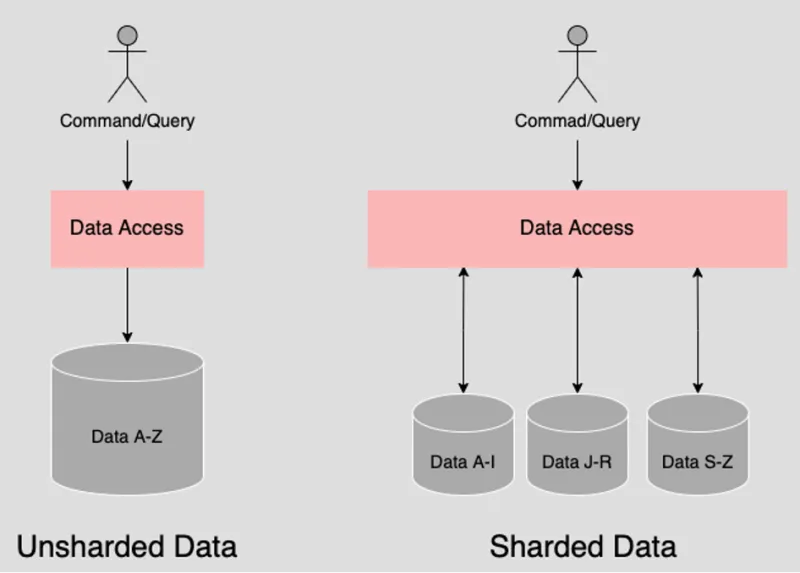Having a grasp of common architectural patterns is essential to designing software architecture at scale. Using them saves not only time but also ensures a reliable implementation of your design. There’s no need to reinvent the wheel when there’s an architectural pattern available that applies to an architecture you’re developing.
The following is a brief overview of the Sharding architectural pattern.
Understanding the Sharding pattern
The Sharding pattern is when a datastore is separated from a single storage instance into multiple instances called shards. Data is then divided according to some form of sharing logic. Queries are executed against the shards. It’s up to the database technology implementing the shards to perform the queries in an optimized manner.
One type of sharding logic is when database administrators (DBAs) segment data according to values in a particular field in the database. An example of such separation is dividing data among the shards according to the first letters of the last name.

Another type of sharding separates data according to a segmentation logic that ensures that disk capacity is consumed equally among all instances.
Pros
- The sharding pattern is well suited for large, distributed enterprise applications.
- Sharding allows for the fast execution of a command or a query.
- Storage segmentation, which is a key feature of the sharding pattern, enables the physical infrastructure to scale in a controlled manner.
Cons
- The sharding pattern requires that DBAs have both specific domain expertise and experience with the best practices of the database technologies in play in order to manage the sharding segmentation effectively.
- Shards distributed over a large number of geolocations can be susceptible to performance degradation due to excessive network traffic.
- Some database technologies are better suited to the sharding pattern than others. Thus, you need to choose wisely.
- Added hardware means a higher total cost of ownership of the service.
Putting it all together
Separating data using the Sharding pattern is well suited to large distributed applications. Large enterprise applications depend on fast data access. Logically segmenting data according to a data table’s key or a database’s storage capabilities executes queries with a fine grain of precision. Searching for data according to shard is faster. Also, scaling becomes more efficient.
About the author
Bob Reselman is a nationally known software developer, system architect, industry analyst, and technical writer/journalist. Over a career that spans 30 years, Bob has worked for companies such as Gateway, Cap Gemini, The Los Angeles Weekly, Edmunds.com and the Academy of Recording Arts and Sciences, to name a few. He has held roles with significant responsibility, including but not limited to, Platform Architect (Consumer) at Gateway, Principal Consultant with Cap Gemini and CTO at the international trade finance company, ItFex.
More like this
Meet the latest Red Hat OpenShift Superheroes
Bridging the gap: Red Hat Academy shaping open source talent in APAC
Why Should You Write Technical Documentation? | Compiler
Tech Conferences 101 | Compiler
Browse by channel
Automation
The latest on IT automation for tech, teams, and environments
Artificial intelligence
Updates on the platforms that free customers to run AI workloads anywhere
Open hybrid cloud
Explore how we build a more flexible future with hybrid cloud
Security
The latest on how we reduce risks across environments and technologies
Edge computing
Updates on the platforms that simplify operations at the edge
Infrastructure
The latest on the world’s leading enterprise Linux platform
Applications
Inside our solutions to the toughest application challenges
Virtualization
The future of enterprise virtualization for your workloads on-premise or across clouds
